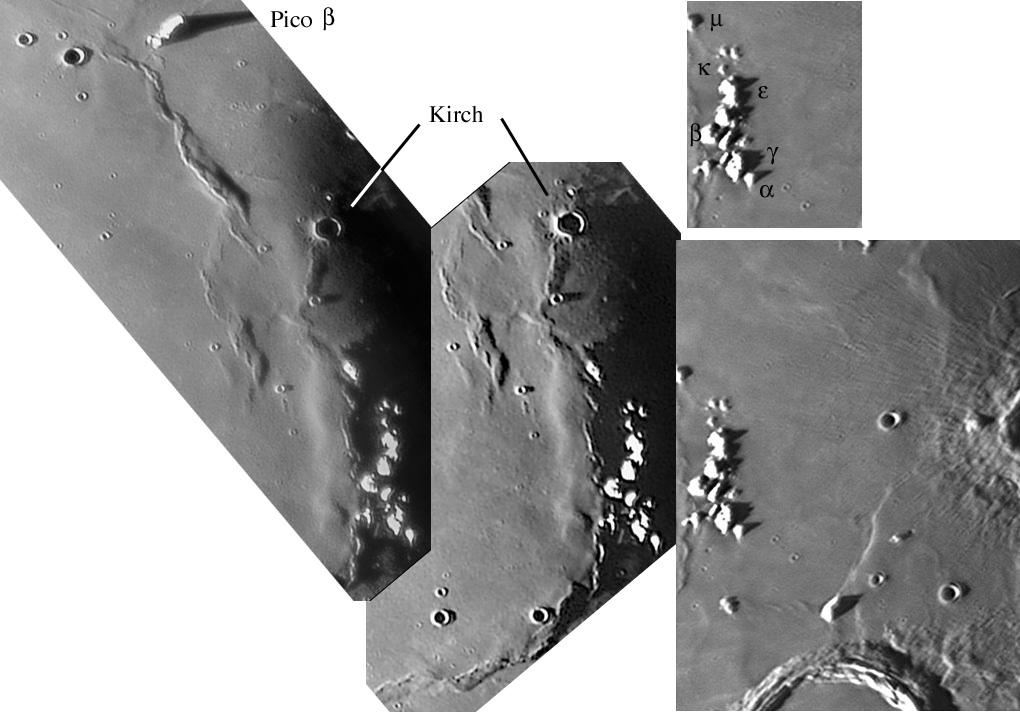 image by Jérôme Grenier
image by Jérôme Grenier
Impact basins commonly have low inner rings instead of central peaks. At the Imbrium impact basin, especially between Plato and Archimedes, scattered peaks rise above the mare surface, defining the otherwise buried inner ring. The cluster of peaks known as the Spitzbergen Mountains, north of Archimedes, illustrates the complex relation between steep peaks, narrow-crested mare ridges, and broad swells. These three images by Jérôme show the area near the peaks under different illuminations. The chain of peaks have a shape like the right side of the letter K. Just west of the peaks is a broad, low swell that appears to have a line of cracks that parallel the peak line. I don’t remember seeing these cracks on any other images. Further up, between Kirch and Pico β, there is a traditional braided mare ridge. South of Kirch a small mare ridge seems to connect to the end of the broad swell, suggesting that they are related. At Imbrium the mare ridges – and also the swells – are inside the ring defined by the peaks. The standard interpretation of mare ridges is that they are thrust faults (where one part of the surface has moved over the adjacent part) in the mare fill. Ring peaks appear to be rebound structures from the formation of the basin, but the origin of swells is uncertain, perhaps a subsurface ponding of magma. Probably all three of these features – peaks, ridges and swells – are manifestations of the same process, but we don’t yet understand it.
Technical Details:
8″ SCT Meade + Barlow 2x + Vesta pro
Related Links:
Rükl chart 12
Jérôme’s Website
Yesterday's LPOD: Window with a View
Tomorrow's LPOD: Elger Reborn?
COMMENTS?
Register, Log in, and join in the comments.



